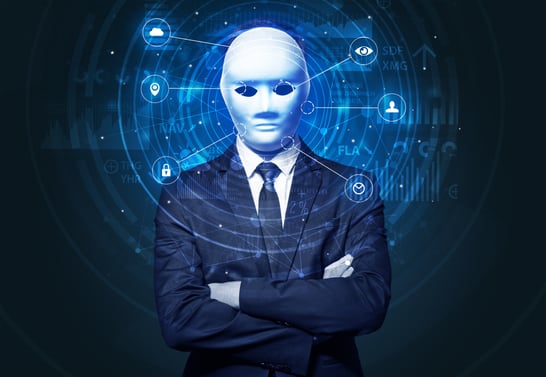Is there any more controversial subject than the growth of Artificial Intelligence (AI) right now? Even some of the so-called ‘AI godfathers’ responsible for creating it are suggesting it could all get out of hand and lead to the destruction of mankind.
Is it the road to Armageddon or the key to a more productive and efficient future? Will it save or destroy our planet?
Could AI tools replace millions of human workers – including building services engineers?
 Like the rest of society, the construction sector is split. Just under half of 950 industry managers surveyed by the recruitment specialist Hays thought AI should be embraced, but 42% were not so sure and the other 11% were positively scared.
Like the rest of society, the construction sector is split. Just under half of 950 industry managers surveyed by the recruitment specialist Hays thought AI should be embraced, but 42% were not so sure and the other 11% were positively scared.
Many acknowledged that AI tools like ChatGPT could deliver cost savings (41%) and improve productivity (28%) but only 15% of construction and property firms told Hays they were allowing staff to use AI tools unmonitored and nearly a quarter (22%) said they would probably ban them due to security concerns.
The most significant finding, however, is that many firms simply don’t believe they have the right skills to harness and make the most of AI. This mirrors the global debate which fixates on the speed with which the technology is developing and the difficulty of humans keeping up.
Yet, surely the answer is to be found in more training and recruiting of AI specialists for specific building engineering tasks? The technology is already proving helpful in many areas of our work – not least in and around energy efficiency and net zero.
Can the AI investment be justified?
The need for a widespread programme of building retrofits has long been apparent, but progress is slow. This is largely because many clients remain unconvinced that the investment can be justified as predicting energy savings and productivity gains is very hard – unless you have great quality data and good analysis.
Using digital twins in building engineering
Digital twins (virtual models of buildings – existing or planned) are now being more widely used to inform retrofitting decisions and the most effective combine aspects of good old fashioned physical engineering principles with high quality digital models.
Many are now being enhanced by AI-driven analysis allowing engineers to rapidly test a series of retrofitting scenarios in the virtual world. This leads to far more accurate predictions for return on investment and reduces upfront cost.
Once the building’s current energy performance is known, for example, the highest source of energy consumption can be identified and which options for reducing it would work best. HVAC and lighting are responsible for upwards of 50% of energy use in a typical commercial building – so this is significant.
Upgrades and improvements can be tested before implementation via the digital twin. For example, new windows, upgrades to the HVAC system, improved insulation, or scope for renewable energy generation, such as solar panels.
AI technology also allows HVAC controls to ‘learn’ about changes in usage or to the local weather etc. so systems can automatically recalibrate without the need for human intervention.
The Capgemini Research Institute estimates that this kind of development means AI could reduce global greenhouse gas emissions by 16% by 2030 and help organisations and governments work towards their net zero goals.
Evidence of progress in our sector is all around with the launch of multiple AI tools aimed directly at our market including Aiforsite’s ‘Wendy’ – an “AI assistant for the built environment”, which can respond in real-time to text or voice on a smartphone, tablet or computer.
‘She’ can work with a BIM model, extract product information, generate 2D images and link other data sources, according to the company. The tool can read and understand contracts and documents, from tender requests to subcontract agreements and make intelligent comparisons and risk analyses, it adds.
Wendy can also present site monitoring, in the form of images, schedules, conditions in real-time. From these, it can compile reports and create alerts.
There are also several AI quantity tracking systems out there which help drive efficiency through production processes and speed up valuations and costings – and many have the additional benefit of being able to track carbon emissions, so helping organisations with their ESG reporting.
But Wendy and the like do not build anything. Could AI do that one day or is it more likely that it will simply remain a source of ever more detailed information and instruction?
The Skills Gap and Artificial Intelligence
Our ever-growing skills gap means greater use of AI is inevitable – not a case of if but when – with ever more powerful AI tools directing operations in ever more complex engineering projects.
The way AI is evolving is like everything else in digital construction in that it depends on us getting the underpinning information organised. Machines depend on data standards to make sense of what they are being asked. They are totally logical so will not make value judgements on issues like sustainability and safety.
It is at this point that oversight and human control become critical, especially if the human workforce is becoming progressively less skilled and, therefore, unable to make informed judgements about what they are being asked to do.
Digital technology has transformed music (even enabling the creation of a new song by the Beatles), reading, how we access news etc, and it is making rapid progress in the world of healthcare, but will it deliver physical building projects and services?
Could engineers become slaves to their AI machines?
Could we see the Armageddon scenario and the total reversal of roles with humans no longer having the underpinning engineering skills to make sense of what the machine is asking them to do.
Or isn’t it simply a case of making sure we have the training to better understand, harness and deploy this potentially world-changing technology – and embrace the recruitment of a whole new generation of AI-savvy technologists into our sector.
Let’s go with the latter. The former doesn’t bear thinking about.
Interested in more about Artificial Intelligence and its use within building engineering?
We have an exciting session at the BESA Annual Conference, on October 12th at Novotel London West, from Atkins Globals Sukhmit Chaggar "AI - the road to Armagreddon or the key to saving our planet?"
 About this session:
About this session:
The debate around Artificial lntelligence has become increasingly feverish this year with even tech gurus warning that it could lead to the destruction of mankind. But what is the reality for our industry? Is it friend or foe?
Sukhmit will provide examples where AI is already working to deliver better built environment outcomes, reduce carbon and make buildings safer and more climate resilient – and look to a future where digital twins and other data-driven mechanisms can deliver ever more impressive engineering outcomes through harnessing AI.
Don't miss out and secure your ticket today!

